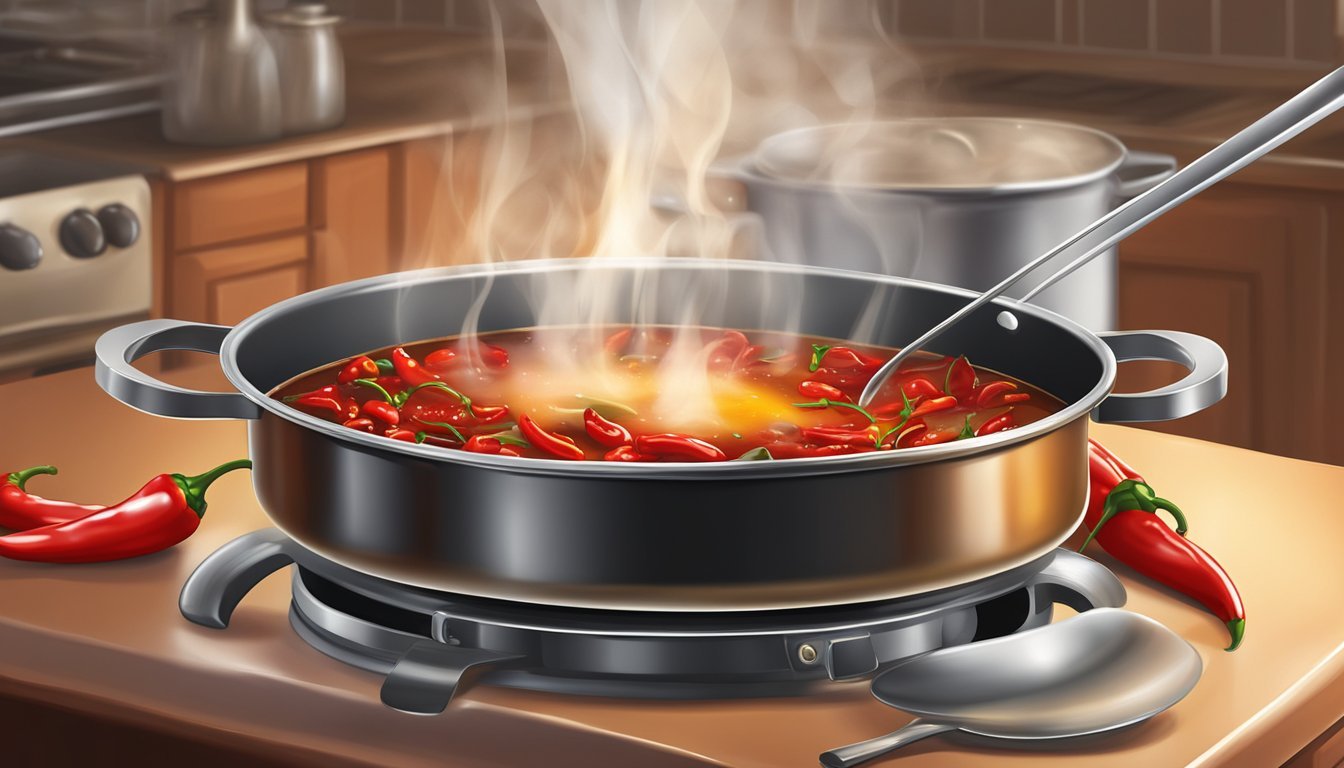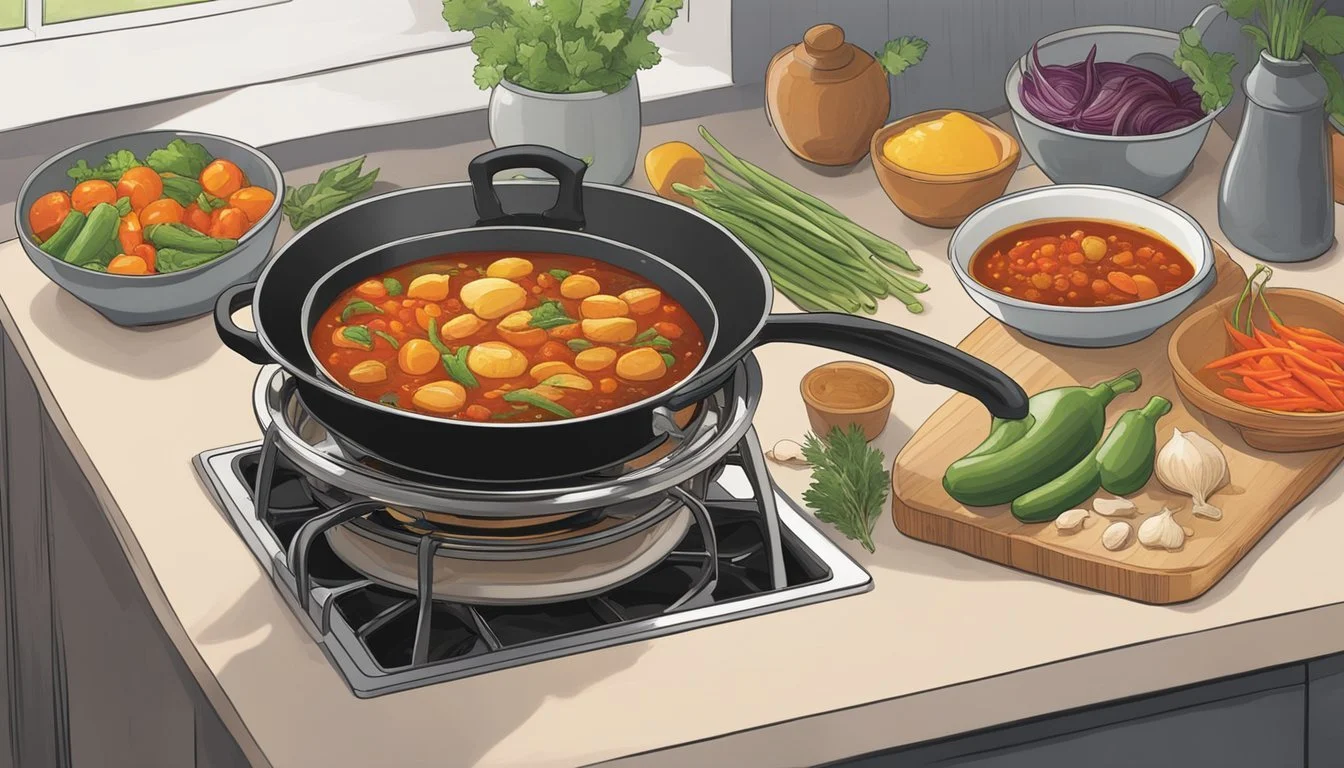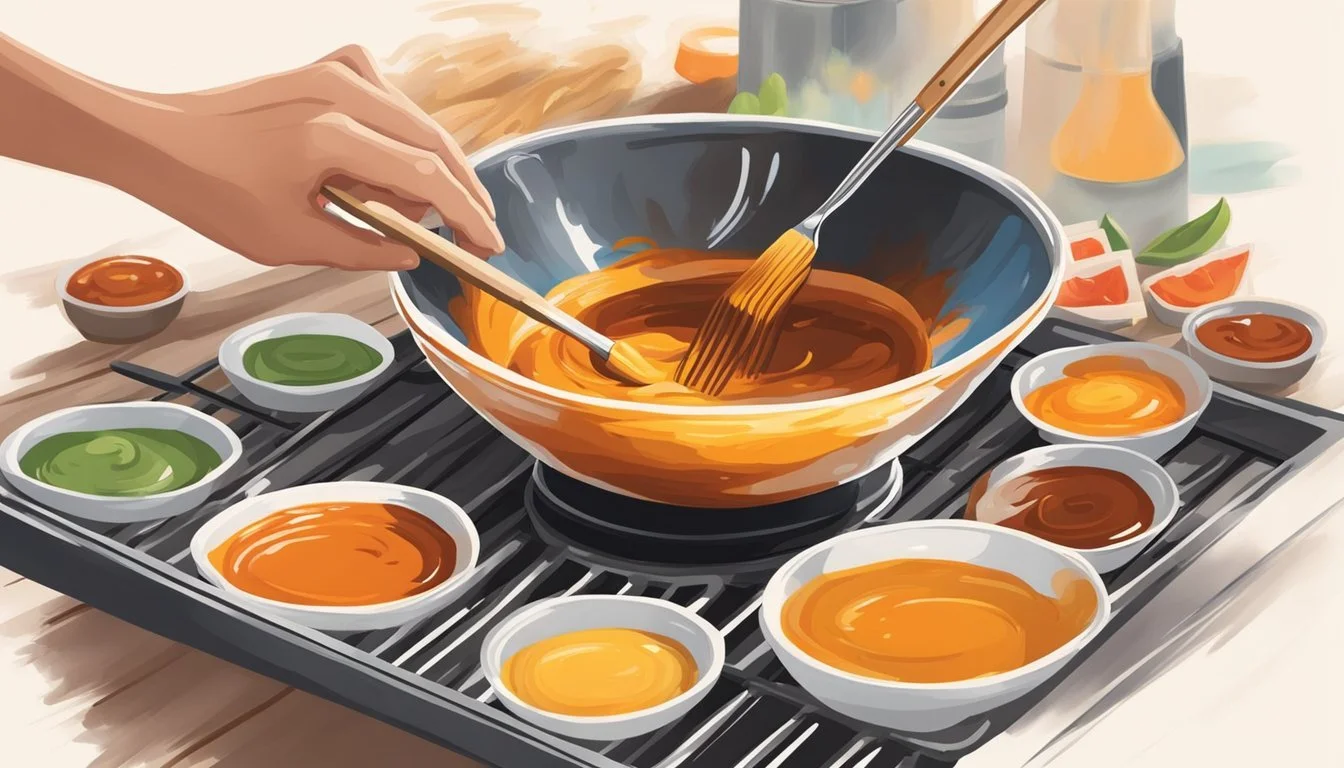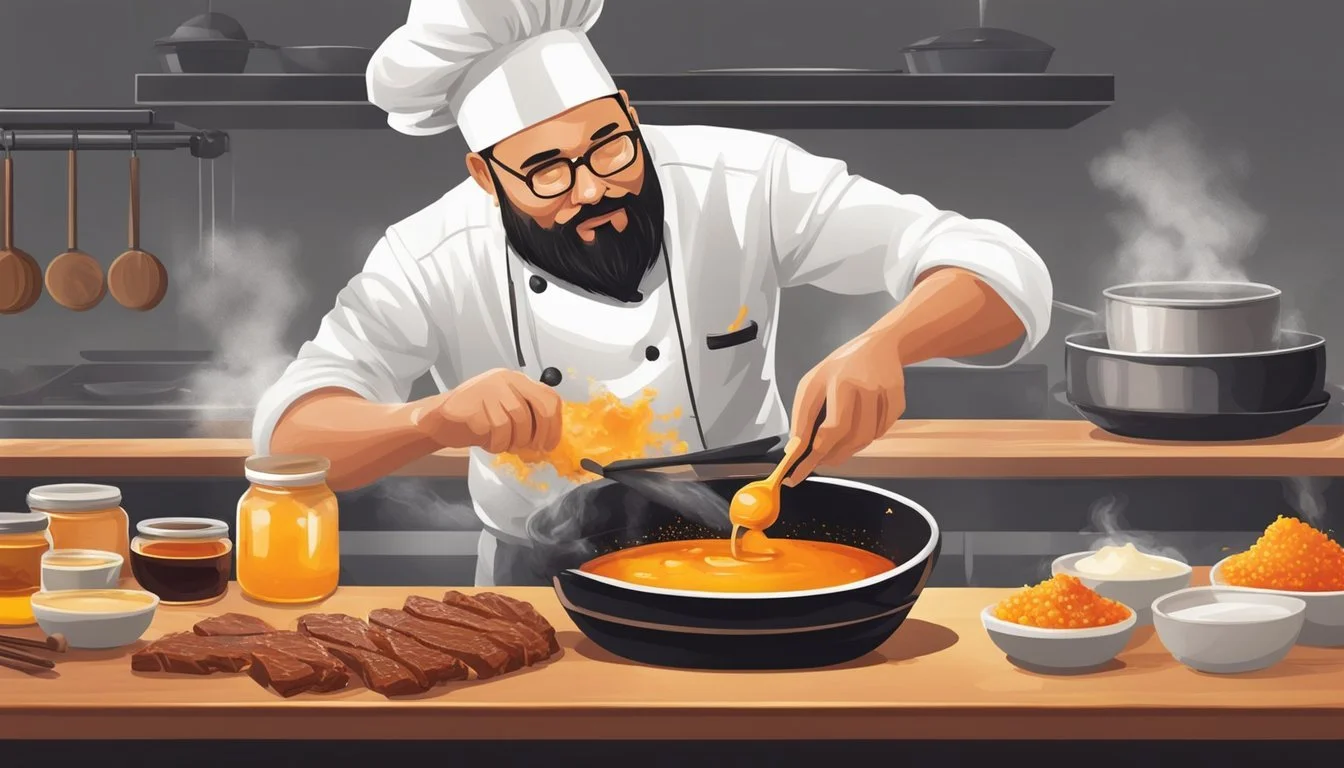Swicy Sauces Essentials
Crafting Your Ultimate Sweet-Spicy Glaze
Sauces with a harmonious blend of sweet and spicy flavors have become a staple in kitchens worldwide. The appeal of these 'swicy' sauces lies in their ability to enhance and transform the taste of various dishes, from meat glazes to dipping sauces. Crafting the perfect sweet-spicy glaze is both an art and a science, requiring a balance of ingredients that complement each other without overpowering the palate.
In the creation of a swicy sauce, the choice of sweet elements often includes brown sugar, honey, or fruit preserves, which lend a caramelized depth when heated. Meanwhile, the heat is introduced through ingredients such as cayenne pepper, chili flakes, or hot sauces. Each spicy component offers a different heat profile, from a sharp, immediate punch to a slow-building warmth, allowing for a tailored approach to flavor intensity.
The versatility of swicy glazes is evident in their application across various cuisines. They pair exceptionally well with proteins like chicken or fish, where the glaze can caramelize on the surface to create a tantalizing, sticky coating. The skill lies in striking the perfect ratio of sweet to spicy, ensuring a glaze that accentuates rather than dominates the natural flavors of the food.
The Basics of Sweet-Spicy Glazes
Sweet-spicy glazes bring a harmonious blend of contrasting flavors that can elevate a dish to new heights. This section will guide you through understanding this balance and identifying the key ingredients to create the perfect glaze.
Understanding the Balance of Flavors
The art of a sweet-spicy glaze lies in the delicate interplay between sugar and heat. Sweetness often comes from ingredients like honey or brown sugar, which provide a caramel-like depth. The spicy component might include chili sauce, hot sauce, or red pepper flakes for a punch of heat. Achieving the right balance requires careful measurement and adjustment to cater to personal preferences and the specific profile of the dish it accompanies.
Essential Ingredients for the Perfect Glaze
A versatile sweet-spicy glaze fulfills both taste and functional roles: it imparts flavor and creates a glossy, appealing finish on the food. Here’s a straightforward list of ingredients for a basic sweet-spicy glaze:
Sweet elements:
Brown sugar or honey
Optional: ketchup for a sweet and tangy note
Spicy components:
Chili sauce or sriracha
Optional: red pepper flakes for added heat
Liquid components for consistency:
Soy sauce or Worcestershire sauce
Apple cider vinegar or lemon juice
Flavor enhancers:
Garlic, finely minced or as garlic powder
Mustard (Dijon or yellow), if desired
Fat for richness:
Olive oil or a neutral oil
Seasoning:
Salt and pepper, to taste
Begin by mixing the sweet elements with the spicy components. Add liquid ingredients to reach the desired consistency, and then incorporate the other flavor enhancers. Whisk in the oil to bring richness and emulsify the glaze. Season with salt and pepper, taste, and adjust the seasoning as necessary.
By being precise with ingredients and focusing on the balance of flavors, one can craft a glaze that offers both a sweet allure and a zesty kick. Whether it's for a meatloaf topping or a chicken glaze, the resulting mixture should complement the main ingredient without overwhelming it, creating a memorable culinary experience.
Sweet-Spicy Glaze Recipes
In this section, readers will discover three exemplary sweet-spicy glaze recipes that are perfect for enhancing the flavor of chicken, meatballs, ribs, and pork with the delicious combination of sweetness and heat.
Classic Honey Sriracha Glaze
For those who love a classic sweet-heat combination, the Honey Sriracha Glaze brings a balanced blend. The recipe calls for simple components including honey for sweetness and sriracha for a tangy spice. Chicken or pork can be generously brushed with this glaze in the final minutes of cooking.
Ingredients:
Honey: 1/2 cup
Sriracha: 1/4 cup
Soy sauce: 2 tablespoons
Minced garlic: 2 cloves
Preparation:
Combine honey, sriracha, soy sauce, and minced garlic in a saucepan.
Simmer over medium heat, stirring until well mixed.
Brown Sugar Bourbon Glaze
The Brown Sugar Bourbon Glaze offers a deep caramel-like sweetness from brown sugar and a rich, woody undertone thanks to the bourbon. This glaze is exceptional on ribs or meatballs, with a hint of garlic and soy sauce to anchor the flavors.
Ingredients:
Brown sugar: 1 cup
Bourbon: 1/4 cup
Worcestershire sauce: 2 teaspoons
Honey: 2 tablespoons
Dijon mustard: 1 tablespoon
Preparation:
Whisk ingredients in a saucepan and simmer until the sugar dissolves.
Apply the glaze to the meat during the last phase of cooking, allowing it to caramelize slightly.
Apricot-Sesame Glaze
Combining the sweetness of apricot preserves with the nuttiness of sesame, the Apricot-Sesame Glaze creates a delightfully fruity and fragrant coating ideal for chicken or pork. Sesame seeds sprinkled on top add a satisfying crunch.
Ingredients:
Apricot preserves: 3/4 cup
Soy sauce: 1 tablespoon
Sesame oil: 1 teaspoon
Minced garlic: 1 clove
Sesame seeds (to garnish): 1 tablespoon
Preparation:
Blend the apricot preserves, soy sauce, sesame oil, and minced garlic over low heat until the mixture is uniform.
In the last few minutes of cooking, glaze the meat and garnish with sesame seeds after removing it from the heat.
Applying Glazes to Proteins
Glazes add a lustrous finish and deep flavor to proteins when applied at the right point during cooking. Key to success is understanding the unique application techniques that result in a glossy, caramelized coating without burning the glaze.
Chicken Glazing Techniques
When glazing chicken, whether it's breasts, thighs, or wings, applying the glaze near the end of the cooking process is crucial. For chicken breasts, brush the sweet-spicy glaze on during the last 10-15 minutes of baking to avoid over-caramelization. Chicken thighs (What wine goes well with chicken thighs?) and wings benefit from a glaze application at the last 20-30 minutes of cooking. This ensures that the skin turns into a sticky, syrupy exterior that complements the naturally juicy meat. The popular Korean fried chicken, often enjoyed boneless, is typically double-fried and glazed immediately after to maximize flavor adherence.
Example Glazing Time for Chicken Parts:
Breasts: Apply during last 10-15 minutes
Thighs and Wings: Apply during last 20-30 minutes
Korean Fried Chicken: Glaze right after frying
Mastering Sweet-Spicy Glazed Meatballs
Sweet-spicy glazed meatballs are iconic for their unique balance of flavors. To get them right, mix the glaze in a small bowl before the meatballs are near completion. Generously spoon or brush the sauce onto the meatballs, then return them to the oven or stovetop to simmer for an additional 3-5 minutes. This short cooking time allows the glaze to set into a tantalizingly sticky coating. For smaller meatballs, reduce the glazing time to avoid hardening the glaze.
Glazing Meatballs:
Apply the glaze towards the end of baking or cooking
Allow 3-5 minutes for the glaze to set
Adjust time for smaller sizes to prevent overcooking
Glazing Options for Pork and Ribs
When it comes to pork and ribs, the approach should emphasize slow layering to build up a thick and rich glaze. Start brushing on the sweet-spicy glaze during the final 30 minutes of cooking, applying multiple thin coats rather than one thick one. This technique allows the sauce to penetrate deep into the meat and provides a sticky, syrupy finish. For ribs, particularly, basting every 10 minutes during this phase maximizes the caramelization without charring.
Layered Glazing Approach for Pork and Ribs:
Begin during last 30 minutes of cooking
Apply in several thin layers
Baste ribs every 10 minutes for optimal caramelization
Sweet-Spicy Glazes in Vegetarian Cooking
Sweet-spicy glazes offer a versatile way to elevate vegetarian dishes (What wine goes well with vegetarian dishes?), seamlessly blending heat from spices with natural sugars for a balanced flavor profile. They can provide a sticky, caramelized coating that transforms vegetables and plant-based proteins.
Creating Glazes for Vegetarian Dishes
For a delectable glaze that can add life to any vegetarian meal, one must start with a balance of sweet and spicy components. An ideal glaze has a thick consistency that clings well to food and shines upon serving.
Ingredients:
1/4 cup of soy sauce for umami depth
1/4 cup of brown sugar or agave nectar for sweetness
1 tablespoon of rice vinegar for acidity
1 teaspoon of chili powder for spice
1 teaspoon of freshly grated ginger
2 cloves of garlic, minced
2 tablespoons of olive oil
Salt and pepper to taste
Instructions:
Heat the olive oil in a pan over medium heat.
Add garlic and ginger; sauté until aromatic.
Stir in soy sauce, brown sugar, rice vinegar, and chili powder.
Season with salt and pepper.
Simmer until the mixture reduces into a thick glaze.
Allow to cool slightly before tossing with cooked vegetables or tofu.
This simple recipe enhances the natural flavors of the ingredients. The glaze can be brushed onto skewered veggies before grilling or used as a dip.
Sweet-Spicy Cashew Chicken-Inspired Vegetarian Option
With the right glaze, creating a vegetarian dish inspired by the flavors of cashew chicken is effortless. Replacing chicken with tofu or tempeh provides a plant-based canvas for the sweet-spicy glaze to shine.
Soy Glaze Mixture:
1/4 cup soy sauce
1/4 cup brown sugar
2 tablespoons sesame oil
1/2 teaspoon chili powder
Salt to taste
Main Ingredients:
1 pound firm tofu or tempeh, cubed
1 cup cashews, roasted
Toasted sesame seeds for garnish
Instructions:
Prepare the sweet-spicy soy glaze following the steps from the previous subsection.
Coat the tofu or tempeh cubes evenly in the glaze.
Bake or sauté until the pieces are crispy on the outside.
Sprinkle roasted cashews and sesame seeds over the dish before serving.
This version maintains the essence of cashew chicken while being completely vegetarian. The glaze's sweetness compliments the nuttiness of the cashews, and the spice adds a warmth that is not overpowering. The final sprinkle of sesame seeds not only adds texture but also reinforces the Asian-inspired flavor theme.
Complementary Sides and Pairings
The balance of sweet and spicy flavors in a dish is beautifully complemented by the right sides, turning a simple meal into a harmonious feast. This section explores how to elevate the experience of sweet-spicy dishes (What wine goes well with spicy dishes?) with perfect rice pairings and vegetable sides that enhance the glaze's flavor profile.
Perfect Rice Pairings for Sweet-Spicy Dishes
Rice, as a side dish, should be flavored in a way that complements the main dish without overpowering it. For sweet-spicy chicken, jasmine rice offers a subtly sweet and nutty taste that pairs wonderfully. To prepare, one might consider using olive oil, a pinch of salt, and minced garlic to lightly sauté the rice before it’s cooked to impart a savory note that doesn't compete with the glaze.
A table illustrating ideal rice seasoning pairings:
Rice Type Olive Oil Salt Garlic Notes Jasmine 1 tbsp To taste 2 cloves, minced Keeps the flavor profile simple and complementary. Basmati 1 tbsp To taste 1 clove, minced The natural aroma of Basmati rice adds to the dish's complexity.
Vegetable Sides to Accentuate the Glaze
Vegetable sides should act as a canvas for the sweet and spicy glaze, allowing it to shine. Steamed or sautéed bell peppers and onions, with their natural sweetness, echo the sweet elements of the glaze while also standing up to the spice. For added texture and flavor contrast, green beans or asparagus can be lightly sautéed in olive oil, and finished with salt and pepper to taste. These vegetables provide a crunchy and fresh counterpoint to the richly glazed chicken.
A list of recommended vegetable sides:
Bell Peppers and Onions: Sautéed until just tender, enhancing the glaze's sweetness.
Green Beans: Lightly sautéed in olive oil, seasoned with salt and pepper.
Asparagus: Cooked until al dente; the slight bitterness balances the sweetness.
The ultimate goal is to ensure that every component of the meal supports the sweet and spicy flavors, creating a culinary experience greater than the sum of its parts.
Customizing Your Glaze
Creating the perfect sweet-spicy glaze, or "swicy" glaze, involves balancing flavors to match personal taste and dietary needs. The beauty of a swicy glaze lies in its versatility, and the following subsections will guide you through customizing the levels of spice, sweetness, and umami.
Adjusting Spice Levels to Taste
To alter the spice intensity:
Mild: Use a teaspoon of red pepper flakes or a tablespoon of sweet chili sauce for a gentle warmth.
Medium: Mix in a teaspoon of sriracha or cayenne pepper to bring a noticeable but manageable kick.
Hot: Add a tablespoon of cayenne pepper or chili powder for a distinctly fiery taste.
Sweetness Modifications for Dietary Preferences
Sweet elements can be tailored as follows:
Traditional Sweetness: Stir in brown sugar or honey for a classic, rich sweetness.
Fruit-Based Sweetness: Apricot preserves can offer a sweet and tangy profile.
Reduced Sugar: For those watching sugar intake, consider using sugar-free sweeteners or reducing the quantity of honey or brown sugar.
Incorporating Umami for Depth of Flavor
Enhancing with umami creates a full-bodied experience:
Classic Umami: A dash of soy sauce can infuse the glaze with a deep and savory umami edge.
Fish Accents: Fish sauce, used sparingly, lends a complex and distinctive umami character.
Western Umami: A small amount of Worcestershire sauce can contribute both a tangy kick and an underlying umami quality.
By adjusting these components, one can craft a swicy glaze that is tailored to their taste buds while also complementing the unique flavors of their dish.
Nutrition and Dietary Considerations
When crafting sweet-spicy glazes, understanding their nutritional profile is crucial for those monitoring caloric intake and requiring specific dietary options.
Caloric Content of Sweet-Spicy Glazes
Sweet-spicy glazes can vary widely in their caloric content, primarily based on the sugar and fat included in the recipe. The use of ingredients like brown sugar, honey, or syrups adds to the total calorie count. For example:
Honey: Approximately 64 calories per tablespoon
Brown Sugar: About 52 calories per tablespoon
Components such as soy sauce and apple cider vinegar contribute minimal calories but are essential for the depth of flavor in the glaze. They should be considered for their sodium content rather than their caloric contribution.
Gluten-Free and Vegan Glaze Options
For individuals with dietary restrictions, there are ample opportunities to modify sweet-spicy glazes to suit gluten-free and vegan diets:
Gluten-Free: Replace traditional soy sauce with a gluten-free alternative like tamari.
Vegan: Opt for natural sweeteners like agave nectar or maple syrup in place of honey.
It's important for consumers to read labels for nutrition information when selecting store-bought ingredients to ensure they meet dietary needs. Home cooks can control the inclusion of natural ingredients to manage the overall nutritional content of the glaze.
Unique Applications of Sweet-Spicy Glazes
Sweet-spicy glazes bring a harmonious blend of flavors that can transform ordinary dishes into memorable culinary experiences. Their application extends far beyond traditional dishes, finding their way into innovative cuisine.
Sweet and Spicy Marinades for Barbecue
Sweet-spicy marinades are a game-changer for barbecue enthusiasts. They consist of ingredients like honey, molasses, or fruit preserves paired with chilies or hot sauces. Particularly for meats like chicken or pork, these marinades caramelize beautifully on the grill, providing a sticky, glistening coating that's packed with flavor.
Chicken: A swicy glaze made with peach preserves and chipotle peppers.
Pork Ribs: (What wine goes well with pork ribs?) A marinade of maple syrup and habanero for a fiery-sweet crust.
Glazes for Appetizers and Snacks
Appetizers such as wings and meatballs are elevated with sweet-spicy glazes, which can also serve as irresistible dipping sauces. These glazes add a layer of complexity and can be tailored to the desired heat level.
Wings: Toss with a glaze made from apricot jam and cayenne pepper.
Meatballs: Serve with a dipping sauce combining honey, garlic, and ginger with a hint of sriracha.
Innovative Desserts with a Sweet-Spicy Twist
Desserts are not exempt from the swicy revolution. Innovative chefs are incorporating sweet and spicy elements to create unique after-dinner treats that surprise the palate.
Chocolate Truffles (What wine goes well with truffles?): Infused with a touch of chili powder for warmth.
Fruit Pies: Drizzled with a spicy cinnamon glaze, blending sweet fruit with an unexpected kick.
Advanced Tips and Techniques
When crafting the perfect swicy sauce, one’s mastery of cooking time and temperature can make the difference between an average glaze and an exceptional one. Proper storage and preservation methods are crucial to extend the life and maintain the quality of homemade glazes.
The Role of Cooking Time and Temperature
Cooking Time:
Short Duration: A brief simmer allows spices and sweeteners to meld without losing their individual characteristics. Typically, 2-3 minutes is adequate for a sauce to thicken when using thickeners like cornstarch.
Extended Cooking: Longer simmering, around 30 minutes, can concentrate flavors, creating a deeper richness. This is ideal for glazes that need to be reduced by half to achieve the desired consistency.
Tips:
Incrementally add cornstarch slurry to achieve thickness without overdoing it.
Consistently stirring prevents the sauce from scorching and sticking to the pot.
Temperature Control:
Maintain moderate heat to encourage a steady simmer. This ensures ingredients integrate efficiently without burning.
How to Store and Preserve Homemade Glazes
Short-Term Storage:
At Room Temperature: Store the glaze in a cool, dark spot only if it’s to be used within hours of cooking.
Refrigeration: Ideally, store in an airtight container and refrigerate for up to a week to maintain fresh taste and prevent spoilage.
Freezing: Pour the cooled glaze into ice cube trays or airtight containers. It can be frozen for up to 3 months. Thaw in the refrigerator overnight when ready to use.
Canning: For extended shelf life, sterile canning techniques can preserve the sauce for a year or more. Ensure all utensils and containers are sterilized before use to prevent contamination.
Techniques:
Ensure the glaze is completely cooled to room temperature before transferring to storage containers to prevent condensation and bacterial growth.
Label containers with the date of creation to keep track of freshness and avoid waste.
Conclusion
Creating the perfect "swicy" glaze involves a harmonious blend of sweet and spicy elements. For those venturing into this culinary trend, a good recipe serves as their guide. By combining sugar, honey, or syrup with spices like chili or smoked paprika, chefs can ensure a balanced profile that enhances the overall flavor of their dishes.
Consistency is key in crafting a glaze that will complement various dishes from chicken to vegetables. The glaze should coat the food item evenly, leaving a satisfying finish on the palate. Here are steps to consider when finalizing the swicy sauce:
Taste Test: Adjust the sweetness or heat to suit the dish.
Check Consistency: Aim for a thick, yet pourable consistency.
Final Adjustments: Add a pinch of salt or a squeeze of acid to brighten the flavors.
One must approach this endeavor with confidence, drawing upon both their knowledge of culinary techniques and the principles of flavor balance. Remember that a successful swicy glaze does not just combine sweet and spicy flavors, it merges them thoughtfully to create a new taste sensation that is more complex than the sum of its parts.
In conclusion, whether one is a seasoned chef or a home cook, the judicious application of these guidelines will help them to elevate their dishes with a swicy glaze that promises to both comfort and excite the taste buds.







